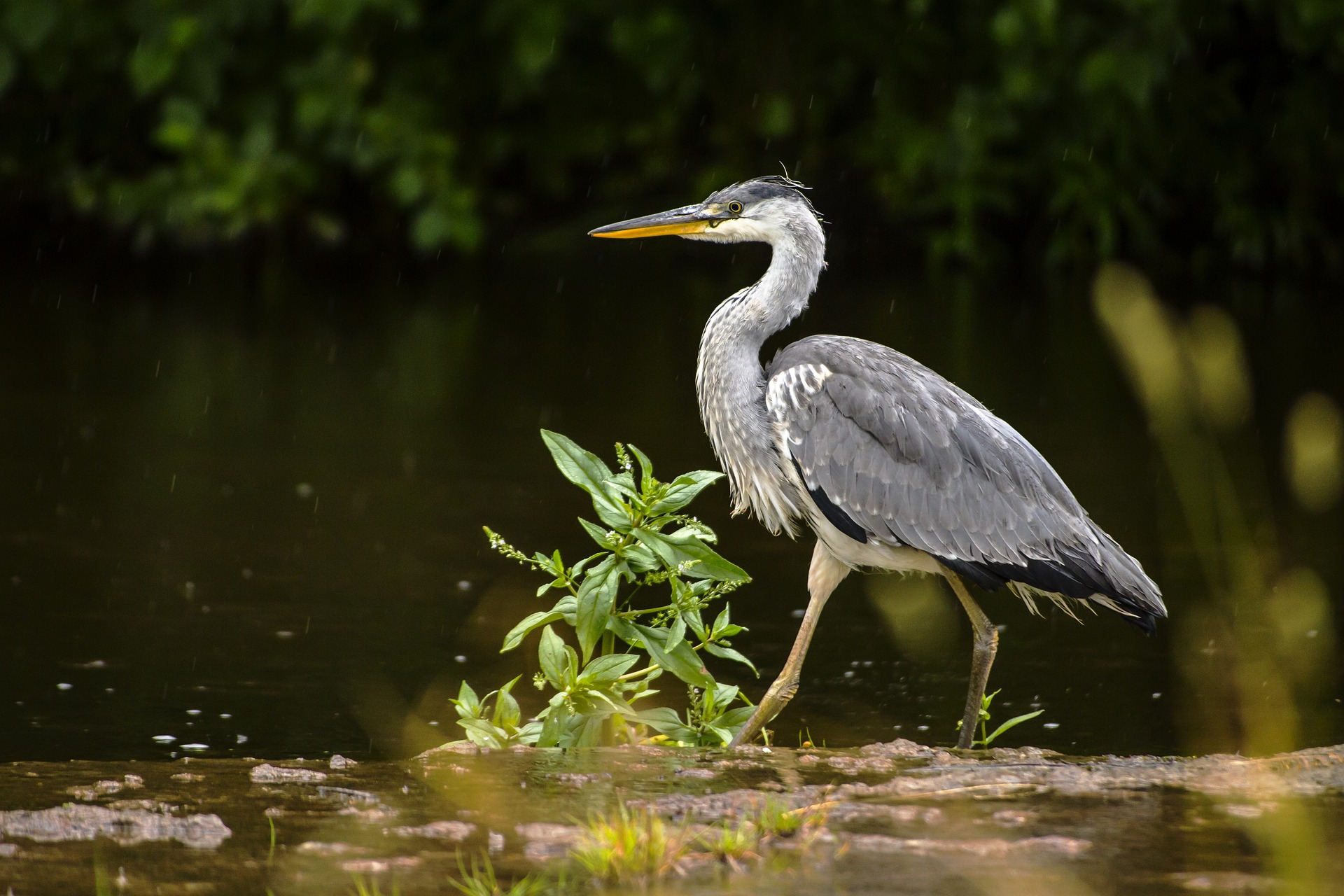The Grey Heron (Ardea cinerea) is a large wading bird belonging to the heron family Ardeidae. Here are some key features and characteristics of the Grey Heron:
- Appearance: Grey Herons are large birds with a distinctive appearance. They have a long neck, long legs, and a dagger-like bill, which they use for catching prey. Their plumage is predominantly grey, with a white head and neck, a black stripe extending from the eye to the back of the head, and black markings on the shoulders and upper wings. During the breeding season, adults may develop long plumes on the back of their heads and necks.
- Size: Grey Herons are among the largest heron species, measuring around 90 to 100 centimeters (35 to 39 inches) in length, with a wingspan of approximately 175 to 195 centimeters (69 to 77 inches). They can weigh between 1 to 2 kilograms (2.2 to 4.4 pounds).
- Habitat: Grey Herons are highly adaptable birds found in a variety of wetland habitats, including marshes, ponds, lakes, rivers, estuaries, and coastal areas. They are also commonly seen in urban and suburban environments, where they may forage in parks, gardens, and other water bodies.
- Diet: Grey Herons are opportunistic predators that feed on a wide range of prey, including fish, amphibians, reptiles, crustaceans, insects, and small mammals. They are skilled hunters and use a patient stalking technique to catch their prey, standing motionless or moving slowly through the water before striking with a lightning-fast jab of their bill.
- Behavior: Grey Herons are solitary birds outside of the breeding season, although they may gather in loose colonies during the breeding season. They are primarily crepuscular or nocturnal hunters, meaning they are most active during dawn and dusk or during the night. They are also known for their distinctive “croak” calls, which they use to communicate with other herons and establish territory.
- Breeding: During the breeding season, which typically occurs from February to May, Grey Herons build large stick nests in tall trees, reed beds, or on cliffs. The female lays a clutch of eggs, usually numbering 3 to 5 eggs, which are incubated by both parents for about 25 to 26 days. Both parents participate in feeding and caring for the chicks after they hatch.
- Conservation: Grey Herons are widespread and abundant throughout their range, and their populations are generally stable. They may face threats from habitat loss, pollution, disturbance, and persecution in some areas. Conservation efforts aimed at protecting wetland habitats and minimizing human disturbances are important for the continued survival of this species.
Overall, the Grey Heron is an impressive and adaptable bird species known for its elegant appearance, stealthy hunting behavior, and important ecological role in wetland ecosystems.
Views: 10
Subscribe to the newsletter:
